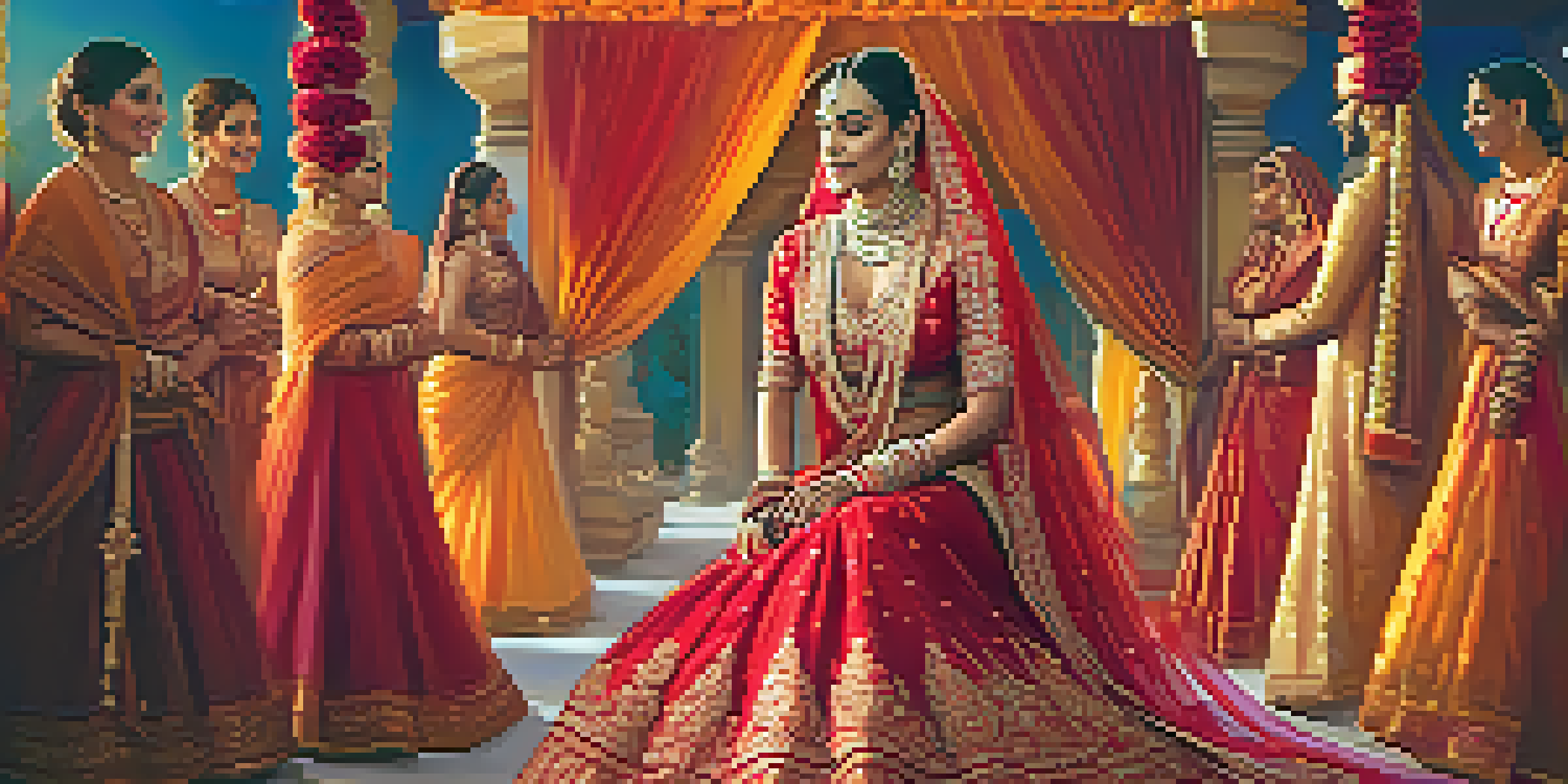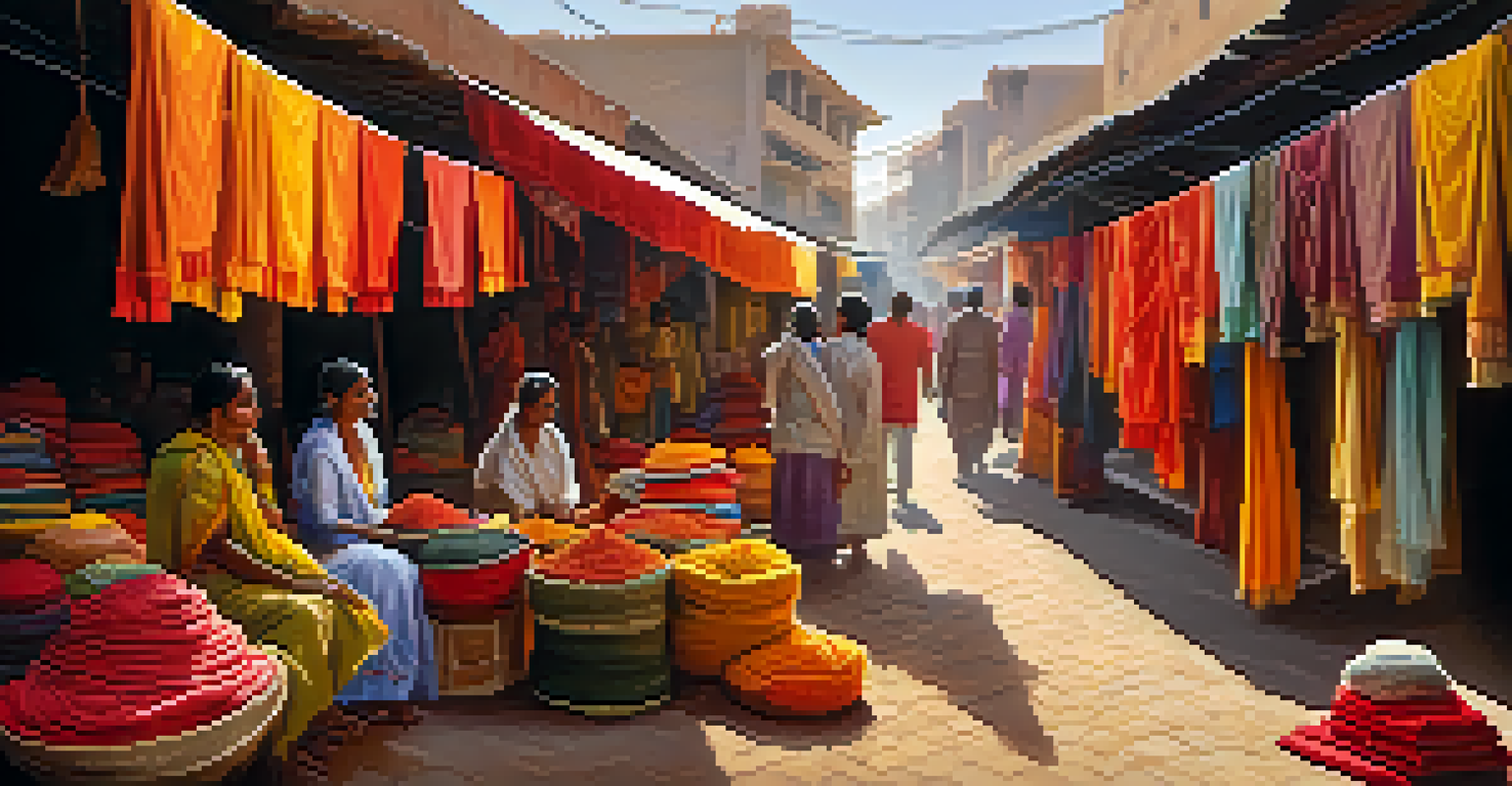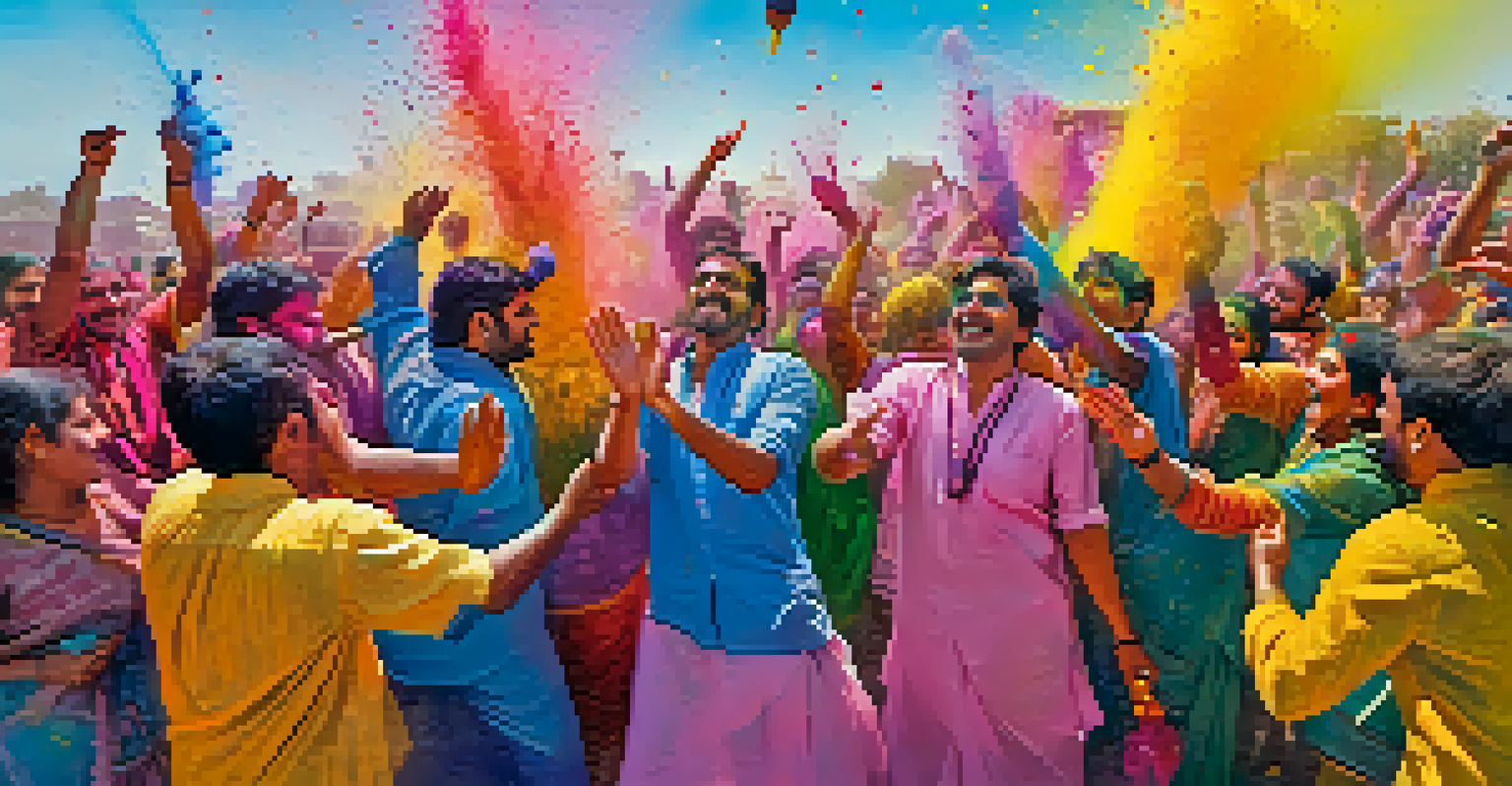Exploring the Vibrant Colors of Indian Traditional Fashion Trends

The Significance of Color in Indian Fashion
In Indian traditional fashion, colors hold deep cultural significance. Each hue is often associated with various emotions, festivals, and rituals, making the choice of color an important part of attire. For instance, red symbolizes love and prosperity, while white is often linked to purity and mourning.
Color is the keyboard, the eyes are the harmonies, the soul is the piano with many strings.
These color associations vary across different regions and communities, further enriching the tapestry of Indian fashion. Imagine the vibrant reds and pinks worn during weddings, contrasted with the serene whites of mourning attire. This diversity showcases how color is not just an aesthetic choice but also a reflection of cultural values.
As you explore Indian traditional fashion, you'll find that the emotional resonance of colors can evoke personal and collective memories, connecting wearers to their heritage and traditions.
Traditional Fabrics and Their Color Palettes
The choice of fabric plays a vital role in Indian fashion, with each material bringing its own color palette to life. For example, silk is often dyed in rich, saturated tones, creating an opulent look that’s perfect for celebrations. On the other hand, cotton tends to embrace softer, pastel shades, ideal for everyday wear.

Regions like Rajasthan are famous for their vibrant block prints on fabrics, showcasing intricate designs in bold colors. These patterns not only highlight the craftsmanship involved but also enhance the visual appeal, drawing attention to the beauty of the fabric itself.
Colors Reflect Cultural Significance
In Indian fashion, colors are deeply tied to cultural meanings, emotions, and traditions, influencing attire choices across various regions.
This interplay between fabric and color reflects the regional identities of India, allowing wearers to express their cultural pride and personal style through their clothing choices.
Regional Variations in Color Use
India's vastness is mirrored in its fashion, particularly in how different regions utilize colors. For instance, in Punjab, you'll often see bright yellow and orange hues in traditional attire, representing the vibrancy of the state’s culture. In contrast, the south might favor deeper shades like indigo and maroon, reflecting its rich heritage.
Fashion is the armor to survive the reality of everyday life.
These regional variations not only enhance the diversity in fashion but also tell stories about the local environment and lifestyle. Take, for example, the earthy tones used in the tribal fashion of central India, which are inspired by the natural surroundings and materials available.
Ultimately, these color choices serve as a reminder of the unique cultural narratives that each region of India carries, celebrating its distinct identity.
Influence of Festivals on Fashion Colors
Festivals in India are a riot of colors, with traditional fashion playing a central role in celebrations. During Diwali, for example, you'll see people adorned in bright golds and reds, symbolizing joy and prosperity. These festive colors are not just for show; they embody the spirit of the occasion and enhance the celebratory atmosphere.
Similarly, during Holi, the festival of colors, traditional outfits often embrace a kaleidoscope of hues, reflecting the playful and joyous nature of the festival. This temporary transformation encourages people to step out of their comfort zones and explore vibrant styles they might not wear on a daily basis.
Regional Diversity in Fashion Colors
Different regions of India showcase unique color palettes that reflect local heritage and lifestyles, enriching the overall diversity of Indian fashion.
Thus, festivals serve as a canvas for showcasing the rich palette of Indian fashion, allowing individuals to express their creativity while honoring cultural traditions.
The Role of Embellishments in Colorful Fashion
Embellishments are a hallmark of Indian traditional fashion, often enhancing the vibrancy of colors. Techniques like embroidery, mirror work, and sequins bring garments to life, adding depth and texture. For instance, a simple blue lehenga can transform into a stunning piece with intricate gold embroidery, creating a striking visual contrast.
These embellishments not only augment the color but also tell a story of craftsmanship and artistry. They reflect the skills passed down through generations, making each piece unique. Imagine wearing a saree adorned with hand-stitched details that speak to the artisans' dedication and heritage.
In this way, embellishments are more than just decorative elements; they are integral to the overall aesthetic, ensuring that the colors shine even brighter.
Contemporary Takes on Traditional Colors
Modern designers are reinterpreting traditional Indian colors in fresh and innovative ways, bridging the gap between heritage and contemporary fashion. By incorporating traditional hues into modern silhouettes, they offer a new perspective on age-old styles. Think of a classic saree reimagined as a chic dress, retaining its rich color palette while appealing to today's fashion sensibilities.
This blend of old and new not only keeps traditional fashion relevant but also attracts a younger audience eager to connect with their roots. It’s fascinating to see how colors that once adorned traditional garments are now making their way into everyday wear, creating a unique fusion.
Sustainable Practices Enhance Fashion
The trend towards sustainable fashion in India is being fueled by the use of natural dyes, which not only help the environment but also preserve traditional techniques.
As a result, traditional colors are not just preserved; they evolve, breathing new life into age-old customs and making them accessible to a wider audience.
Sustainable Practices in Colorful Fashion
With a growing focus on sustainability, many Indian designers are now turning to eco-friendly practices in their color choices. Natural dyes derived from plants, flowers, and minerals are being used more frequently, offering a sustainable alternative to synthetic dyes. This not only reduces environmental impact but also revives age-old techniques that celebrate the beauty of nature.
Moreover, these natural dyes often provide a unique, organic palette that can't be replicated, giving garments a distinct charm. Imagine wearing a dress dyed with indigo from a local plant, carrying with it a story of cultural heritage and environmental consciousness.

Thus, the movement towards sustainable practices is not merely a trend; it’s a reflection of a deeper commitment to preserving both the environment and traditional craftsmanship in Indian fashion.